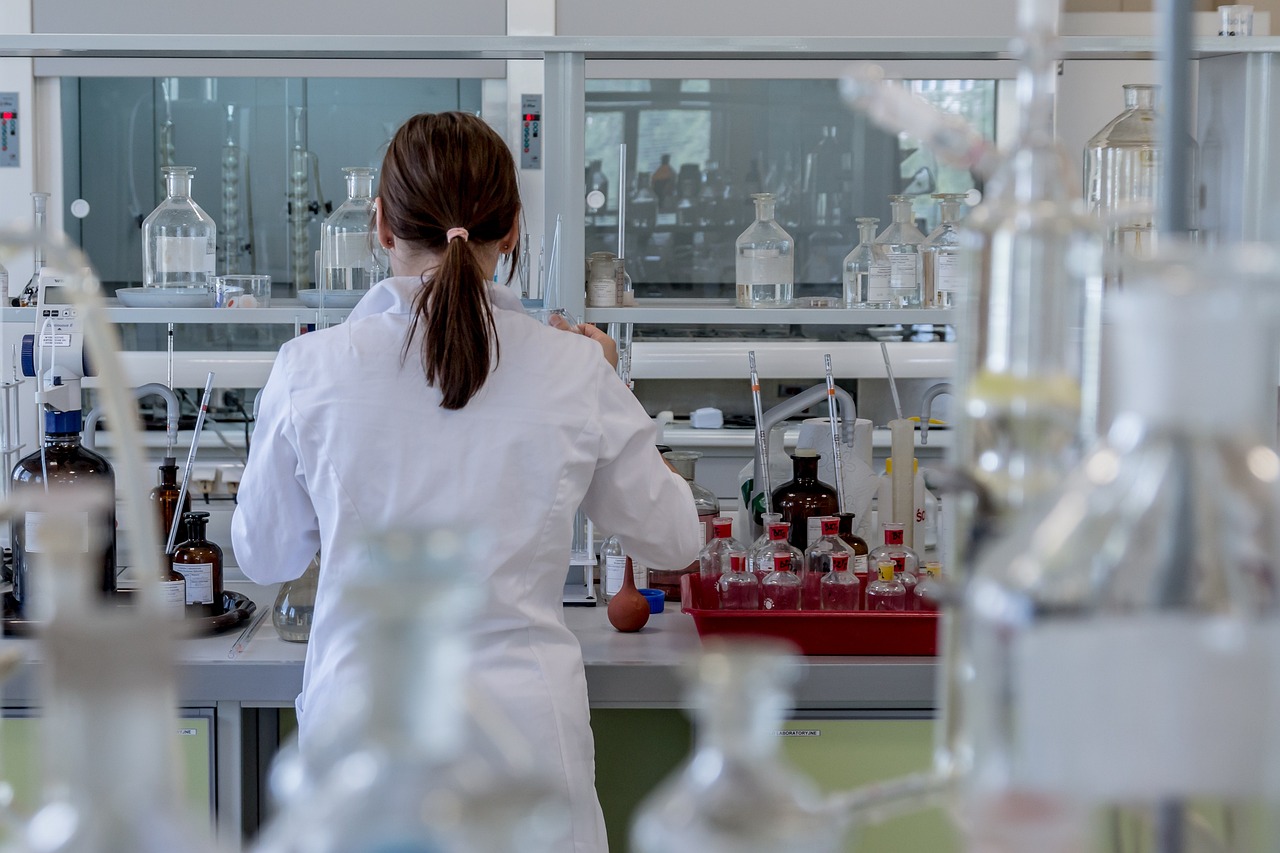Pathologic examination plays an irreplaceable central role in the medical diagnostic system, and it is a key bridge between clinical medicine and basic medicine. However, in the real healthcare environment, a considerable portion of patients and even some healthcare professionals do not have an adequate understanding of pathology examination, and they may tend to regard pathology examination as an auxiliary diagnostic tool rather than a mandatory diagnostic and therapeutic step to be followed. This misunderstanding may lead to ignoring the importance of pathology examination at critical moments, thus delaying the detection and treatment of the disease. Therefore, correcting this one-sided understanding of pathology examination is extremely important for improving the overall quality of medical care and protecting people’s health. The purpose of this article is to help you fully understand the importance of pathology examination.
I. Definition and classification of pathological examinations
Pathological examination is a diagnostic method that reveals the essential features of a disease at the microscopic level through detailed observation and analysis of diseased tissue. The main objective of this method is to determine the nature, extent and stage of development of the disease, thereby providing the clinician with valuable information about the disease process and possible treatment options. Pathologic examination is a complex and delicate process that is divided into two main categories: histopathologic examination and cytopathologic examination. Histopathological examination is the cornerstone of diagnostic pathology, which primarily involves cutting diseased tissues into thin slices, often referred to as sections, and then examining these sections through a microscope for in-depth observation and analysis. This method reveals subtle changes in the structure and morphology of the tissue and helps doctors understand the cellular and molecular level characteristics of the disease. Cytopathology, on the other hand, focuses more on the analysis of cell samples. This method of examination primarily involves obtaining samples containing diseased cells, which are then stained and viewed microscopically. Cytopathology plays a key role in the diagnosis of many diseases, especially cancer.
II. Importance of pathological examinations
- The basis of accurate diagnosis of disease
Pathological examination is a kind of examination method through detailed observation and analysis of diseased tissues. It directly observes the changes in cell morphology, structure and function in tissue sections or body fluids, and provides doctors with a diagnostic basis for the nature of the disease. This method is able to differentiate between benign and malignant lesions and lays the foundation for accurate diagnosis of disease. In many diseases, especially malignant diseases such as tumors, pathological examination is the gold standard for confirming the diagnosis. Through this method, doctors can determine the nature, grading and staging of tumors, and thus develop individualized treatment plans for patients.
- Basis for determining treatment plan
Pathological examination, as a key part of modern medical diagnosis, has irreplaceable value. It reveals the essential causes and processes of diseases through detailed microscopic observation, chemical analysis and molecular biology testing of diseased tissues or body fluids. This process not only confirms the diagnosis of a disease, but more importantly, it provides a scientific and precise basis for doctors to develop individualized treatment plans for each patient.
In clinical practice, doctors will accurately determine the type and stage of the disease based on the results of the pathological examination and detailed understanding of the cellular morphology of the diseased tissue, structural characteristics, degree of invasion, and possible genetic mutations. In this way, doctors will be able to formulate a more reasonable treatment plan based on such detailed information. For example, for patients with malignant tumors, pathological examination can help determine the degree of malignancy, the extent of invasion, and the presence or absence of distant metastasis of the tumor, thus guiding doctors to choose the most suitable surgical methods, chemotherapy protocols, and radiotherapy strategies for the patient.
- Condition monitoring and assessment
Pathologic examination is irreplaceable in clinical application. In addition to playing a decisive role in the initial diagnosis of the disease, helping doctors to accurately distinguish the type of disease, clarify the etiology of the disease, and provide a solid basis for the development of targeted treatment programs for the patient, it also plays a crucial role in the tracking and monitoring of the disease process and assessment of the therapeutic effect. Through regular collection of diseased tissue samples for pathological examination, doctors are able to systematically observe and analyze the morphological changes of the disease in the course of its development, such as the degree of cell proliferation, heterogeneity, depth and extent of infiltration and other key indicators. In this way, doctors can accurately grasp the speed and severity of each patient’s disease progression on the basis of these detailed pathological data, and then adjust the treatment plan in real time to ensure that the treatment strategy always matches the stage of the disease development, maximize the therapeutic effect, slow down the progression of the disease, and ultimately help the patient to recover!
- Improve medical quality
The popularization and wide application of pathology examination plays a key role in promoting the improvement of medical quality in clinical practice. Through the rigorous and meticulous pathology examination process, doctors can obtain valuable information about the occurrence, development mechanism and prognosis of the disease, thus ensuring the accuracy of the diagnosis. This accurate diagnosis is the prerequisite and foundation for the development of individualized treatment plans with strong targeting, low side effects and good compliance. In addition, pathology examination can guide clinicians to conduct real-time monitoring and condition assessment during the course of disease treatment, and adjust the treatment plan in a timely manner according to the examination results, thus significantly improving the effectiveness of treatment.
- Research and academic exchange
Pathological examination occupies a pivotal position in medical research and academic communication system, which plays the role of “decoder” in revealing the essence of diseases. Through detailed sampling, processing, staining and observation and analysis of diseased tissues, pathologists are able to obtain first-hand information on the occurrence, development and regression of diseases, and these detailed data provide valuable clues and basis for medical research. With the data provided by pathological examinations, researchers can explore the causes and mechanisms of diseases, pathophysiological changes, and evaluation of treatment effects, thus promoting breakthroughs in the diagnosis of diseases, formulation of treatment strategies and preventive measures in the medical field. At the academic exchange level, pathology examination is also a very valuable key link. By sharing and discussing the pathological characteristics and research results of various diseased tissues, medical practitioners around the globe can enhance their mutual knowledge and understanding, and give rise to new scientific research ideas and methods. In various international and domestic academic conferences, journal articles and monographs, the analysis and discussion of pathological examination cases have become an important bridge connecting medical experts from different countries and regions.
III. Precautions for Pathological Examination
There are several key precautions to follow when performing pathologic examinations. First, accurate sampling is the basis for ensuring the reliability of the examination results. The sampling location, size and depth of the diseased tissue directly affect the accuracy of the examination results. Improper sampling may lead to deviations between the examination results and the actual situation, thus affecting the diagnosis and treatment of the disease. Therefore, doctors need to fully understand the condition, including information on the nature, location and size of the lesion, and select the appropriate sampling method and location based on this information.
Secondly, timely examination is crucial to ensure the accuracy of the examination results. The morphology and structure of the lesion tissue will change over time, and any delay in examination may lead to changes in the lesion tissue, thus affecting the accuracy of the examination results. Therefore, patients should undergo pathological examination as soon as possible so that doctors can understand the real situation of the disease in time and provide an accurate basis for subsequent treatment.
Correct interpretation of pathology results is also essential. Pathologists need to have rich professional knowledge and experience in order to accurately determine the nature and type of diseased tissue. At the same time, clinicians and patients also need to fully understand and correctly apply the pathology examination results. Clinicians need to formulate appropriate treatment plans based on the examination results in conjunction with the patient’s actual condition, while patients need to understand the relevant knowledge of the disease in order to better cooperate with the treatment.
IV. Dissemination and popularization
In order to enhance the public’s awareness of and attention to pathology testing, we need to adopt diversified strategies to popularize and promote it. First, it is crucial to strengthen medical education and training, which will help more doctors deeply understand and fully realize the central role of pathology examination in the diagnosis and treatment of diseases. Secondly, the public should be popularized with the knowledge and importance of pathological examination through media campaigns, health talks and other vivid and diversified forms, so as to enhance people’s health awareness and self-protection ability. In addition, the government and relevant organizations should also increase their support and investment in pathological examinations, and actively promote the research and development and application of relevant technologies in order to improve the accuracy and efficiency of pathological examinations.
In conclusion, the importance and necessity of pathologic examination as the cornerstone of medical diagnosis cannot be ignored. We must correct the public’s misunderstanding of pathology examination and increase their awareness of and attention to pathology examination. At the same time, doctors need to continue to learn and improve their professionalism to ensure that they are able to accurately conduct pathology examinations and correctly interpret the results. Only in this way can we make better use of pathology as a powerful tool to protect patients’ health and highlight its important value in the medical field.



